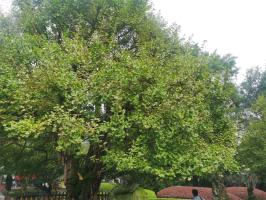Can Planting Trees Stop Climate Change and Water Shortages?
Climate change and water shortages are two critical issues that are affecting the world today. Global warming has led to rising temperatures and sea levels, while water shortages have become more severe due to population growth and climate change. Planting trees has been proposed as a possible solution to these problems, as trees absorb carbon dioxide and release oxygen, which could help to reduce greenhouse gas emissions and alleviate water shortages.
The Role of Trees in Reducing Carbon Emissions
Trees are known to be a crucial element in the fight against global warming. When trees absorb carbon dioxide from the atmosphere, they store carbon in their biomass, which reduces the amount of carbon dioxide in the air. Trees also release oxygen through photosynthesis, which helps to clean the air and prevent respiratory problems. By planting more trees, we can increase the amount of carbon absorbed, which could reduce the amount of greenhouse gases in the atmosphere and slow down global warming.
The Relationship Between Trees and Water
Trees have a unique relationship with water, as they play an essential role in maintaining water cycles. Trees absorb water through their roots and release it into the atmosphere through transpiration, where it forms clouds and returns as rainfall. With fewer trees, less water is absorbed, and less is returned to the atmosphere, leading to water shortages. The loss of trees also leads to an increase in soil erosion, which further exacerbates water shortages. By planting more trees, we can help to increase water absorption, stabilize soil, and prevent water shortages.
Obstacles to Planting Trees on a Large Scale
While planting trees seems like a promising solution to climate change and water shortages, there are several obstacles that must be overcome for this to happen on a large scale. One major issue is that deforestation has already destroyed many forests around the world, making it difficult to plant new trees in these areas. Another challenge is that many people depend on forests for their livelihoods, particularly in developing countries, so simply planting trees is not a viable solution. Moreover, there is a need for more funding to be allocated for planting trees and the maintenance of these trees.
The Future of Planting Trees and Its Potential Impact on Climate Change and Water Shortages
Despite the challenges, planting trees holds great potential to help combat climate change and water shortages. Organizations like the United Nations Environment Programme have launched initiatives to plant more trees around the world, such as the Billion Tree Campaign, which has planted over 15 billion trees since its start in 2007. Governments can also take steps to incentivize reforestation and promote sustainable forestry practices, such as offering tax breaks for planting trees on degraded land. In doing so, we can help to mitigate the effects of climate change and prevent water shortages, while improving the health and well-being of our communities.
Conclusion
All in all, planting trees has the potential to be a significant part of the solution to climate change and water shortages. While we face obstacles in implementing this solution on a large scale, it is clear that planting more trees can have a positive impact on our environment and our communities. With increased funding and support, we can work to create a greener and more sustainable future for all of us.

 how many times do yo...
how many times do yo... how many planted tre...
how many planted tre... how many pine trees ...
how many pine trees ... how many pecan trees...
how many pecan trees... how many plants comp...
how many plants comp... how many plants can ...
how many plants can ... how many plants and ...
how many plants and ... how many pepper plan...
how many pepper plan...






























